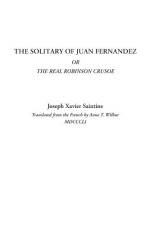That is the island of San Ambrosio; it is there, he does not doubt it for an instant, that his new friend lives; yes, his friend! for, from this moment he experiences for him an emotion of sympathetic affection. He loves him, he is so much to be pitied! Poor father, he has lost his sons, he has lost his fortune and the hope of returning to his country; and yet there reigns in his letter a tone of dignified calmness, of religious resignation which can come only from a noble heart. He is a Spaniard and a Roman Catholic; Selkirk is a Scotchman and a Presbyterian; what matters it?
To-day his friend demands assistance, and he has resolved to dare all, to undertake all to respond to his appeal. Like a lamp deprived of air, his mind has revived at this idea, that he can at last be useful to others than himself. The inhabitant of San Ambrosio shall be indebted to him for an alleviation of his sorrows; for companionship in them. What is there visionary about this hope? Had he not already conceived the project of preparing a barque to explore that unknown coast? God seems to encourage his design, by sending him at once this double manna for the body and soul, the porro, which will suffice for his nourishment, and this writing, which the wave has just brought, to impose on him a duty.
He immediately sets himself to the work, and obstacles are powerless to chill his generous excitement. Of the vegetable productions of the island, the red cedar and myrtle are those which grow of the largest size;[1] but yet their trunks are not large enough to serve when hollowed out for a barque. Well! he will construct a raft.
[Footnote 1: The myrtus maximus attains 13 metres (a little more than 42 feet) in height.]
He fells young trees, cuts off their branches, rolls them to the shore, on a platform of sand, which the waves reach at certain periods; he fastens them solidly together with a triple net-work of plaited leather, cords woven of the fibre of the aloe, supple and tough vines; he chooses another with diverging and horizontal roots, the habitual direction taken by all the large vegetables of this island, the sand of which is covered only by two feet of earth. This shall be the mast. He plants it in the middle of the raft, where it is kept upright by its roots, knotted and interwoven with the various pieces which compose the floor. For a sail, has he not that which was left him by the Swordfish? and will not his seal-skin hammock serve as a spare sail?
He afterwards constructs a helm, then two strong oars, that he may neglect no chance of success. He fastens his structure still more firmly by all that remains to him of his nails and bolts, and awaits the high tide to launch his skiff upon the sea.




